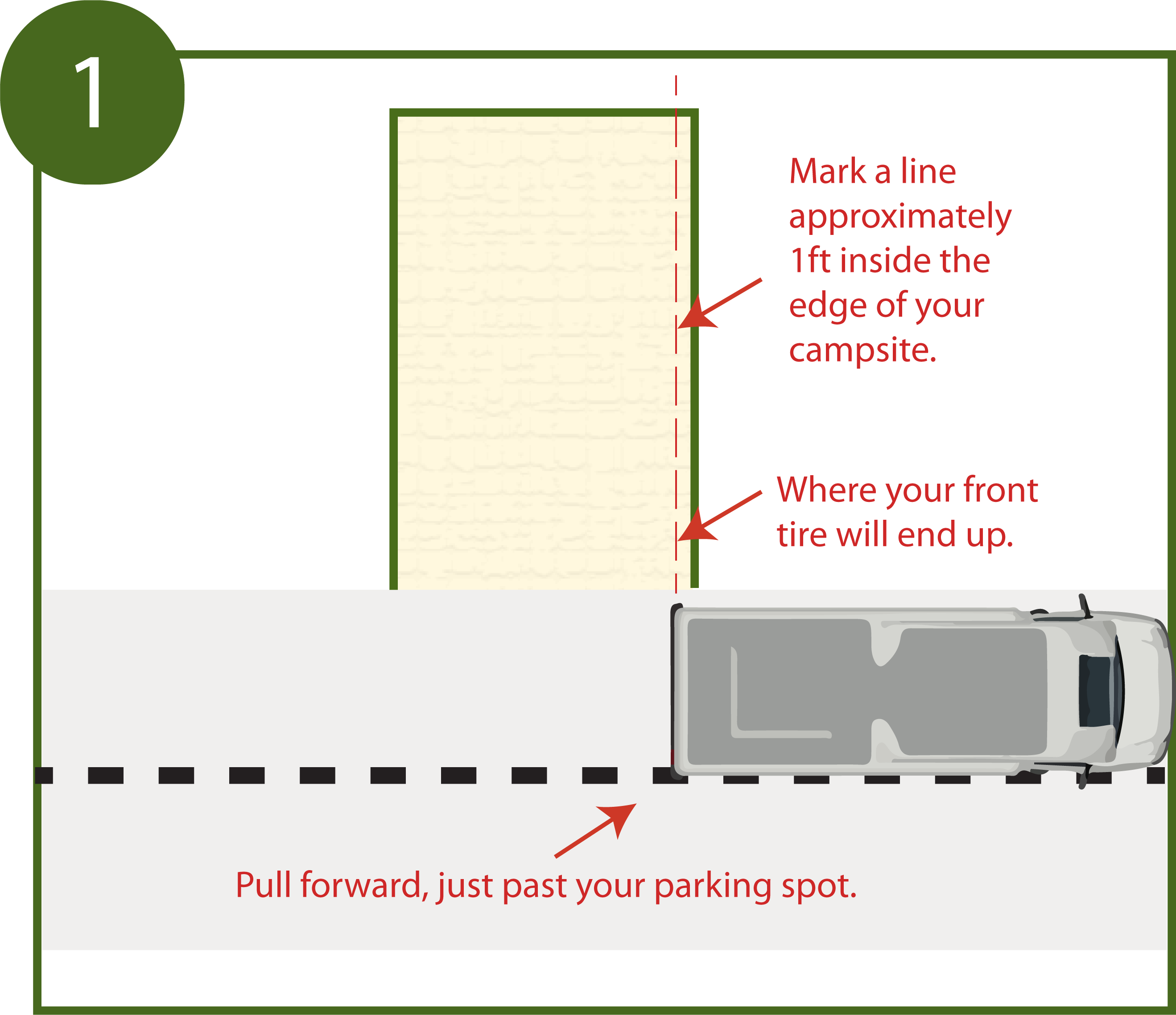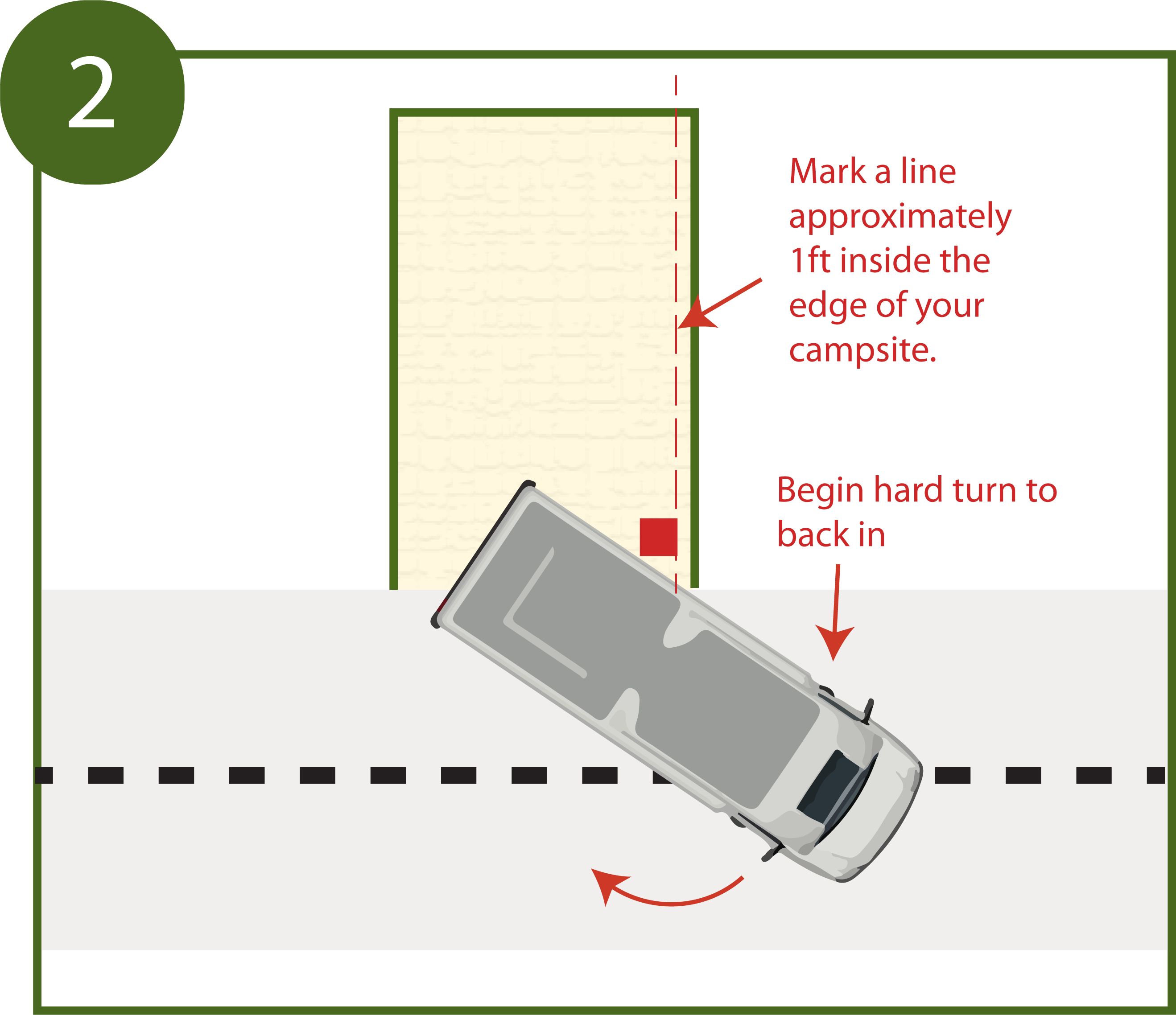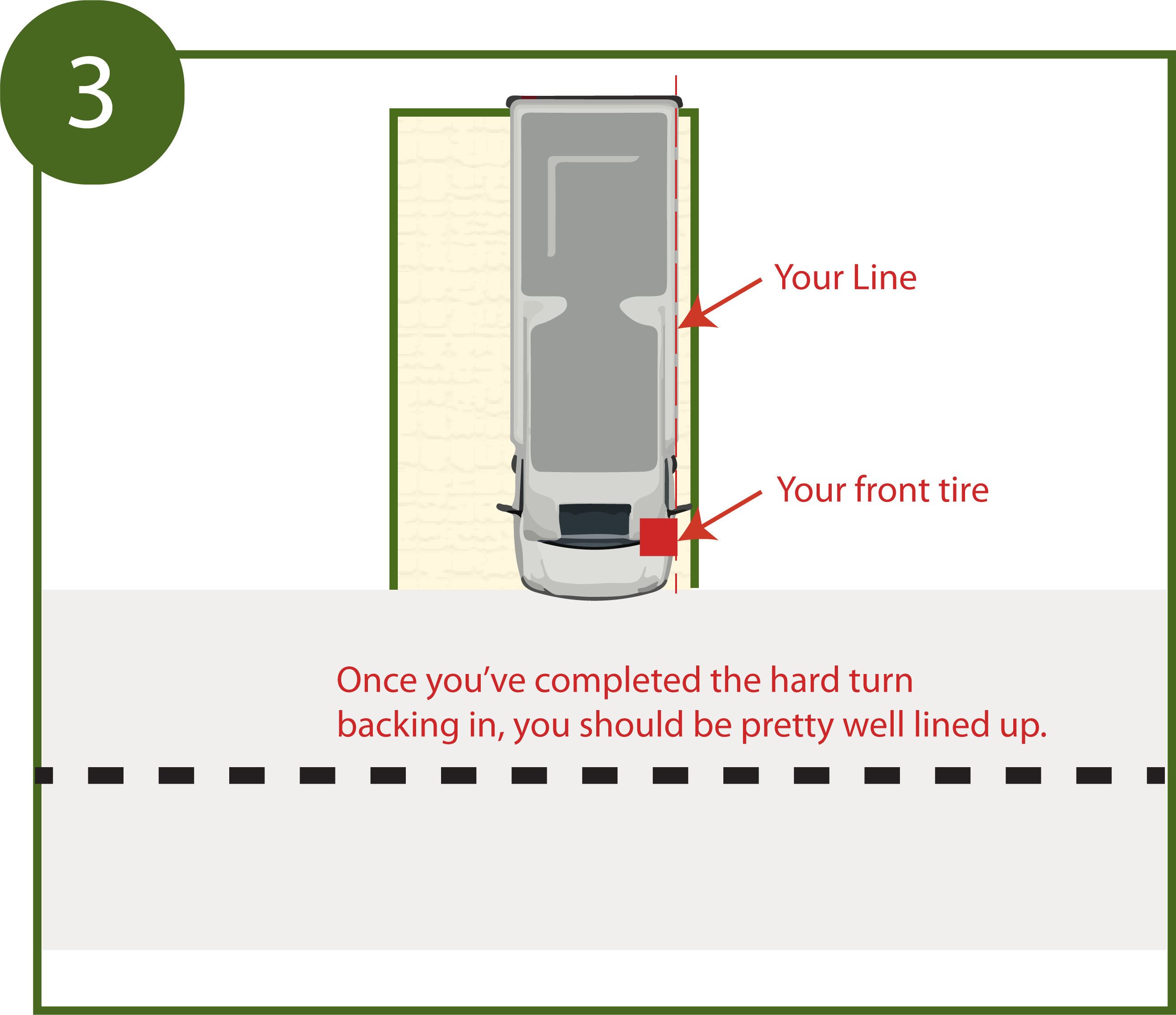How to Back Up a Class A Motorhome / RV Into a Camping Spot
Posted by Happy Campers Store on Mar 28th 2024
How to Back Up a Class A Motorhome / RV Into a Camping Spot
Backing up and parking a Class A motorhome can be a daunting task, especially for new RV owners. The size and weight of these vehicles require careful maneuvering and spatial awareness. In this instructional tutorial, we will guide you through the process of backing up and parking a Class A motorhome, providing you with the confidence and skills needed to navigate tight spaces and campground setups.
Let's figure out how to back that thang up!
Do You Need a Special License to Drive a Class A RV?
In most cases the answer is no. However, because the weight range of Class A RVs is so large, you’ll need to check the weight before you can determine what’s legal in your state.
As a general rule, if your Class A RV is less than 26,000 pounds and 40 feet in length, you're probably fine to drive with your regular driver's license. However, if your Class A motorhome exceeds that limit, you may need to take an RV safety course or get a CDL to operate it on the road.
Class B and C vehicles generally don't require a special license in any of the 50 states. If you tow a trailer or car behind your RV with a combined weight of more than 26,000 pounds, you might need a special license or endorsement, depending on your state. Again, if you're unsure of exactly which license you'll need, check with your state's Department of Motor Vehicles (DMV). If your license matches the requirements in the state where your RV is registered, you don't need to obtain a special license when traveling through a state with different rules or taking a road trip into Canada.
Just because you may not need a special license, doesn't mean you shouldn't practice especially if this is new to you. This is once case where size does matter and it can be a little intimidating, and the chances are pretty high that you're wondering how the hell do you back up this thing.
Steps for Backing Up A Class A RV or Motorhome:
Before you begin the backing up and parking process, it's essential to make a few preparations.
Follow these steps to back up a Class A Motorhome Successfully:
1. Understand Your Motorhome:
First, let's familiarize ourselves with our trusty motorhome. When you're new to backing up a bigger RV like a Class A, take time to learn its feel ie: dimensions. Identifying any potential blind spots or obstacles will help you navigate with ease during a reverse. If available, consult your motorhome's manual or seek advice from experienced RV drivers.
2. Choose an Adequate Parking Spot:
Select a parking spot that is large enough to accommodate your Class A motorhome. Look for a level area with ample space to maneuver and avoid obstacles such as trees, poles, or other vehicles. Obviously these are ideal circumstances and we don't always have the luxury of choosing "the ideal spot", but this is where we'll start.
3. Clear the Surrounding Area:
Remove any obstacles or debris from the parking area that may hinder your maneuvering. This includes checking for low-hanging branches, rocks, or other potential hazards.
4. Use Spotter and Mirrors:
Make good use of your motorhome's mirrors. Adjust them to have a clear view of both sides and the rear. Take note of the mirror's dimensions to estimate the distance between your motorhome and any nearby objects accurately.Enlist the help of a spotter or rely on your motorhome's mirrors to assist you during the backing up and parking process. Clear communication with your spotter is crucial to ensure a safe and successful maneuver.
6. Wide Turns:
Remember, motorhomes require wider turns compared to regular cars. Take extra caution when making turns to avoid clipping curbs or obstacles. When backing into a campsite, there are a couple things you can do to make the process a bit smoother.
During Step 3, what you can do is mark a line approximately 1ft inside the edge of your campsite. Doing this will help you be able to safely back into the space with enough clearance on the lead side.
Once you've marked your line, cones are helpful, pull your Motorhome forward just past the parking space.

7. Start Slow and Steady:
Begin by moving your motorhome slowly and begin a hard right turn. Check your mirrors and use your spotter, but the line you marked should provide you with just enough clearance to make this turn.
8. Use Landmarks:
If you don't have cones, make sure to identify easily distinguishable landmarks in your surroundings, such as light poles or painted lines, to help you gauge distance and direction. Using these markers as reference points will significantly increase your accuracy.


9. Practice, Practice, Practice:
Don't get discouraged if it feels difficult at first! Developing your motorhome reversing skills takes time and practice. Consistent repetition will gradually build your confidence and eventually make reversing a natural part of your RV adventures.
On that note, let's dive into practicing a little more, because now that you have the steps it's best to get comfortable with them prior to testing them out at a campsite.
Practice Turning with a Big Class A Motorhome: Preparing for the Road
Practicing turning with a big Class A motorhome before hitting the road is essential for building confidence and mastering the maneuverability of your vehicle. By dedicating time to practice in a controlled environment, you can familiarize yourself with the motorhome's dimensions, turning radius, and handling characteristics. In this guide, we will provide you with step-by-step instructions and helpful tips to practice turning with your Class A motorhome before embarking on your journey.
It helps to have some visuals and fortunately, Peter and John over at RVGeeks have put together some great video tutorials for you. I highly recommend checking out their YouTube Channel if you haven't already.
I. Find an Open Practice Area:
Locate a spacious and open area where you can practice turning your Class A motorhome without any obstructions or traffic. Ideal locations include empty parking lots, large fields, or private properties with ample space.
II. Preparing for Practice:
Before you begin practicing turning, make sure to complete the following preparations:
1. Check the Motorhome:
Inspect your motorhome to ensure it is in proper working condition. Check the tires, brakes, lights, and any other essential components to ensure they are functioning correctly.
2. Clear the Practice Area:
Remove any obstacles or debris from the practice area that may hinder your maneuvering. This includes checking for low-hanging branches, rocks, or other potential hazards.
3. Set Up Reference Points:
Use cones, markers, or other visible objects to set up reference points that simulate real-life scenarios, such as parking spaces, curbs, or narrow lanes. These reference points will help you practice turning accurately.
III. Basic Turning Practice:
Start with basic turning exercises to familiarize yourself with the motorhome's turning radius and handling. Follow these steps:
1. Start Slowly:
Begin by driving the motorhome at a slow and controlled speed. This will allow you to have better control and make adjustments as needed.
2. Practice Straight-Line Backing:
Practice straight-line backing to improve your ability to maneuver the motorhome in a straight line. This exercise will help you develop a sense of the motorhome's dimensions and how it responds to steering inputs.
3. Execute Wide Turns:
Practice making wide turns to simulate real-life scenarios. Start by turning from the outermost lane, allowing ample space for the motorhome to complete the turn without encroaching on other lanes or obstacles.
4. Practice Tight Turns:
Gradually progress to practicing tight turns, such as turning into a narrow lane or making a U-turn. Pay close attention to the motorhome's rear swing and adjust your steering accordingly to avoid hitting curbs or other objects.
5. Navigate Obstacle Courses:
Create an obstacle course using cones or markers to simulate real-life scenarios, such
Conclusion:
Becoming proficient in backing up your big old motorhome is attainable for everyone. By following these simplified steps, practicing regularly, and investing time in understanding your motorhome's dimensions and mirrors, you'll be able to maneuver your vehicle with confidence and ease.
Remember to come back and check out our site if you have any questions about your RV holding tanks, septic system or how to control unwanted odors in your RV. We have many helpful posts like these to help answer any questions you may have;
Why Is There a Bad Smell Coming From My RV Sink?
https://www.happycampers.store/blog/why-is-there-a...
Which RV Black Tank Treatments Actually Work?
https://www.happycampers.store/blog/does-happy-cam...
How to Clean Your RV Gray Water Tank?
https://www.happycampers.store/blog/how-to-clean-a...
How Do I Unclog an RV Black Tank?



